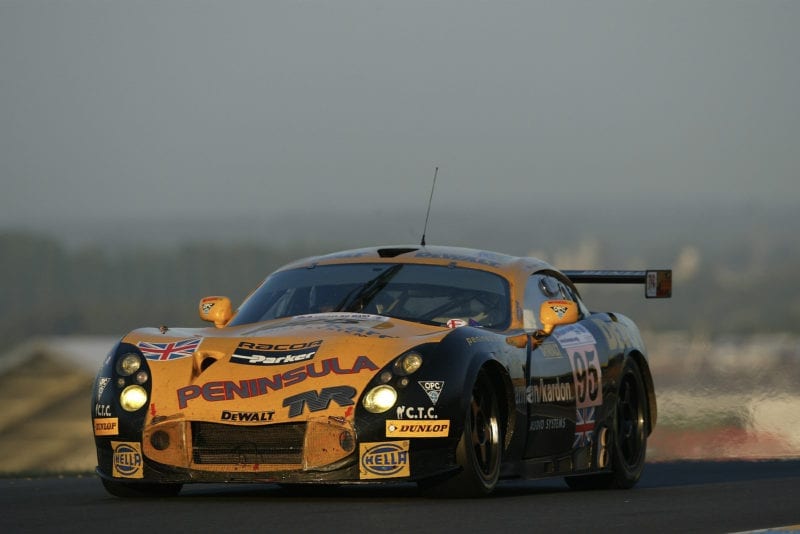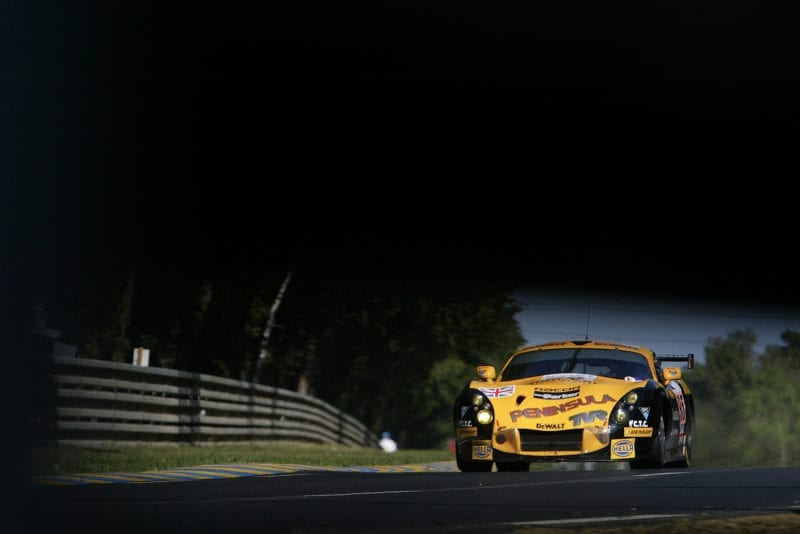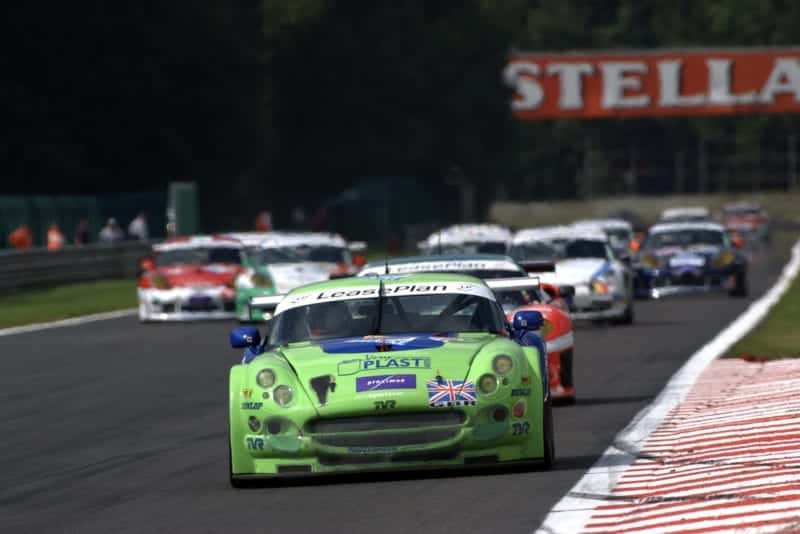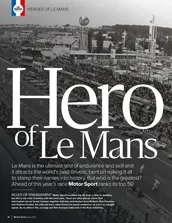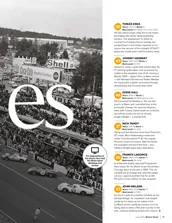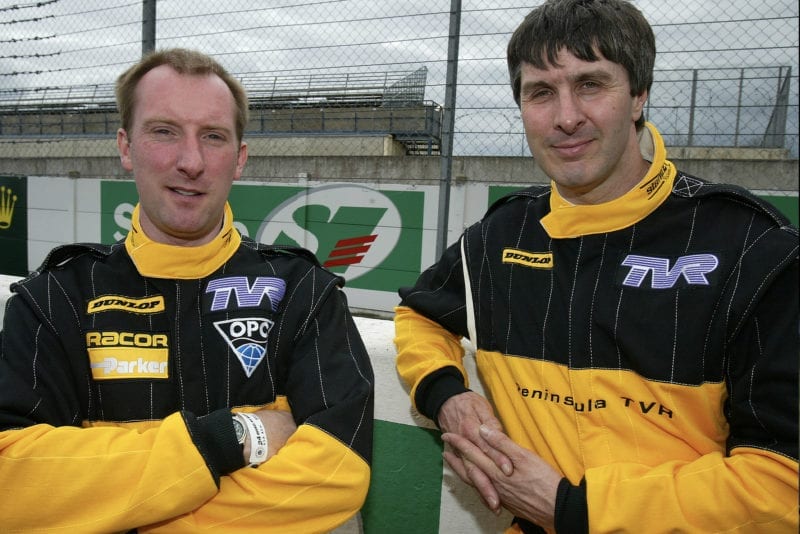“Next thing I knew, I’m driving the factory’s horrible bright-pink demonstrator back to base with all these bits to turn it into what would become our Cerbera Speed Six. It was pretty successful for a backyard effort. We blew up a lot of bits, and learned a load from it. That really began TVR’s trail to Le Mans.
“When the Tuscan R, or T400R, idea came about, we worked with the car’s designer on the first cars, and they used our suspension setups and geometry, anti-roll bars and we even made the rollcage for it to stiffen the chassis.”
Work started in earnest on what was then called the Tuscan R in 2000, with the R standing simply for ‘Racer’. However, when TVR’s new road-going T350 was launched in 2002, the Tuscan R instead became known as the T400R, and cars were updated with more angular front and rear headlights.
It was an ambitious programme. TVR had built up its own in-house engine division over the latter years of the Challenge, and developed its the four-litre naturally aspirated straight-six engine: the famous ‘Speed Six’, which sent 400bhp straight to the rear wheels.
The factory went further with its chassis development also. Whereas the open-topped Tuscan Challenge cars were simple fibreglass bodies over a steel spaceframe, the T400R at the time laid claim to being the stiffest structure the firm had ever made, thanks to its fusion of carbon fibre and steel across the body and chassis. It led to massive weight savings, with a dry T400R weighing in at just 1100kg.

Racing Tuscan was developed in the British GT championship
Bryn Lennon/Getty Images
The British GT Championship hosted much of the T400R’s development, with it slotting nicely into the GTO second division. The first car was originally bought by Richard Stanton and campaigned extensively in the domestic series, but things stepped up a notch when the European Le Mans Series was announced for 2004. It opened up a whole new market for smaller marques to design and develop cars specifically for endurance racing. Suddenly brands like TVR had a more cost-effective route to Le Mans.
A series of safety changes had to be made to make the T400R fit the ACO’s homologation standards and some extra endurance equipment added, plus the car’s track was widened. A total of seven racing T400Rs were built, and only three of those actually made it to Le Mans, making them a relatively rare club, run by a select few teams and a few lucky individuals.
Keen sports car racer John Hartshorne purchased the first car, chassis 1227, from Stanton for 2002 and adds that he loved being involved with the TVR family.
“I always got on so well with Peter Wheeler, and raced against him in the Tuscan Challenge many times,” says Hartshorne. “As time progressed, a business I had an interest in became a TVR dealer, hence Peninsular TVR was proudly on my car for many years.
“I don’t think TVR ever had a grand plan to get to Le Mans, but owners like Martin Short, Richard Stanton and Lawrence Tomlinson certainly drove the factory in that direction, and also funded a lot of it. I think in the end all of the car owners got inspired by the magic of Le Mans, and TVR became an aspirational brand for British enthusiasts there.”
Short also recalls the fondness with which TVR was met at Le Mans. “Through the whole of my career I carried TVR with me in some way. So many people followed me to Rollcentre from TVR, great engineers and leaders. And my whole career was borne out of that GT period.
“Without TVR I would never have had a Le Mans programme of any form. There was something about being part of TVR that was unique. It was a special breed of people. You could call us eccentric, esoteric, a little bit whacky, but we all thought slightly differently. There’s a common ground among owners. There’s something about it that you don’t get from owning a Porsche, Mercedes or Lamborghini. There’s something quintessentially British and special about being a member of the TVR club, and I think that resonated with a lot of people.”
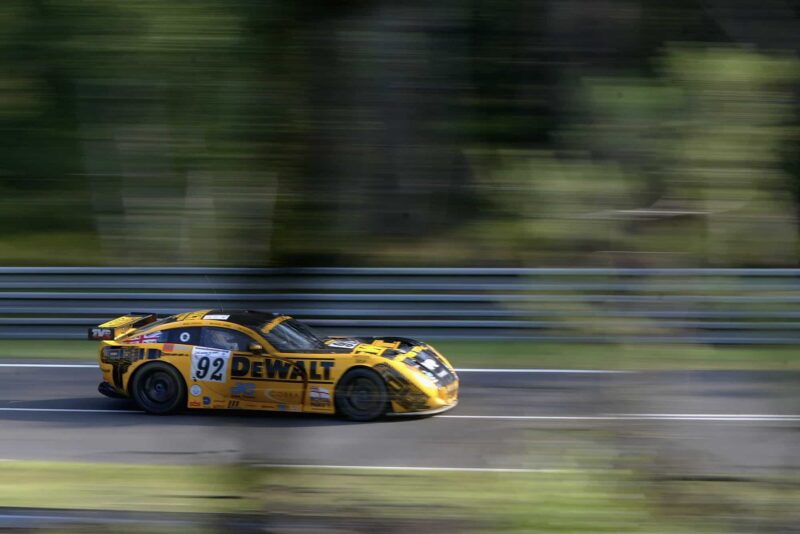
Le Mans 2003 marked the (brief) entry of TVR
Getty Images
The T400R’s first appearance at Le Mans came in 2003 – albeit at the opposite end of the grid to those Bentleys – with a pair of Dewalt-backed cars being run by the Racesports Salisbury team. One car was eliminated after it was hit by a prototype in the first hour, while the second had its gearbox let go after 93 laps. It wasn’t an ideal debut, but TVR was there, and people had taken notice.
Hartshorne remembers his first Le Mans, standing on the track ahead of the start in 2005. The first, and only, Le Mans appearance for chassis 1227, which culminated in an eighth place in class. It would also the last appearance at La Sarthe for the model just as the TVR bubble burst with a Russian buy-out, and motorsport was no longer on the agenda.
